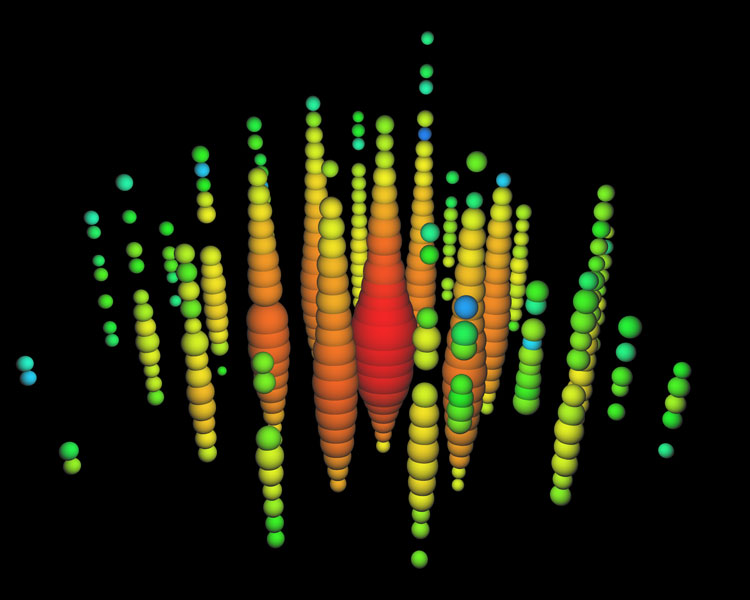
Last June, attendees at the Neutrino 2012 international conference heard about two rare events observed by the IceCube neutrino telescope. Science-trained eyes immediately classified them as something they had never seen before. In a paper submitted to Physical Review Letters, the IceCube Collaboration confirms that those two events are the two highest energy neutrinos ever observed. The events have estimated energies of 1.04 ± 0.16 and 1.14 ± 0.17 PeV, hundreds of times larger than the energy of a proton at the LHC.
Most of the neutrinos reaching the Earth originate either in the Sun or in our atmosphere through the interaction of incoming cosmic rays. However, if we look at neutrino energy, once we reach the PeV scale (the energy equivalent to 1,000,000 times the mass of a proton), neutrinos coming from far off in our galaxy or from more distant places in the visible Universe become dominant.
IceCube researchers have estimated that the probability that these two events are not background, i.e., anything else in the detector besides astrophysical neutrinos, is at the 2.8 sigma level. Therefore, the signal observed so far does not allow claiming a first observation of astrophysical neutrinos. Nevertheless, it is clearly pointing to IceCube as the place to look for them.
Inspired by the observation of these two PeV events, IceCube researchers are already working on an analysis with an optimized technique that will be substantially more sensitive to similar events at lower energies. Results of that analysis are expected soon and could provide more evidence of what is now a very intriguing hint of an astrophysical signal.
+ info: “First observation of PeV-energy neutrinos with IceCube,” IceCube Collaboration. M.G. Aartsen et al. Physical Review Letters 111 (2013), prl.aps.org, arXiv:1304.5356

